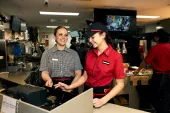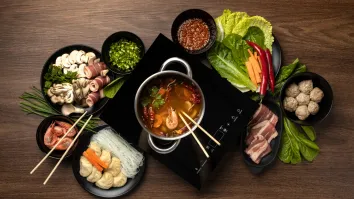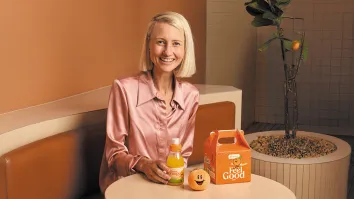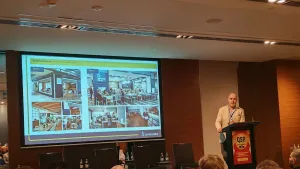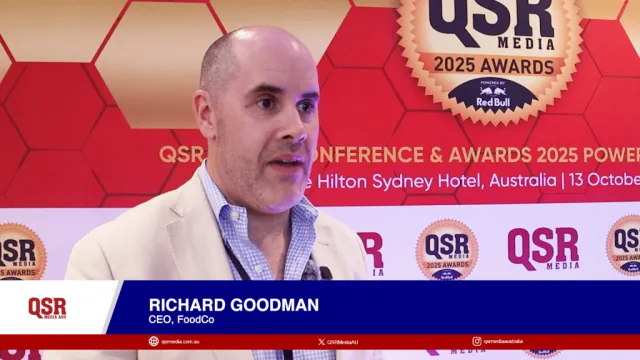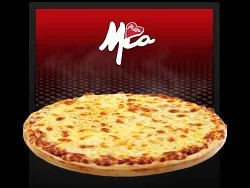
QSR COO’s reveal top operational strategies
Learn how Operations executives plan to grow their business despite market uncertainties.
In our interviews with three QSR’s and one industry advisory firm, we learn that franchisee profitability remains a top priority for COO’s, with a focus on driving down costs to keep margins afloat without having to raise prices.
Some are looking to ramp up customer service and food quality in an effort to lure in value diners and hold on to their loyalty. And most should also continue to tinker with their supply chain and training systems, looking to squeeze out more out of both.
Franchisee Profitability
For Aktiv Brands, a multi-brand QSR with 35 stores nationwide, maintaining and growing franchisee profitability is an urgent concern, a strategy that involves making operations leaner than ever. “We are focusing on stronger leasing negotiations to reduce our occupancy costs, reconfiguring our menu ingredients to ensure a greater gross profit margin can be achieved whilst maintaining a competitive retail selling price,” said Dean Vella, Executive Director of Aktiv Brands Pty Ltd.
And while other QSR’s are tempering their franchisee expansion plans at least until current economic qualms dissipate, Mr. Vella said Aktiv Brands is doing the reverse. It is building up store numbers, but with a stricter focus on “attracting and recruiting the right franchisees for the business” in the mindset that these will produce “long-term sustainable new store opportunities.”
Customer Service and Food Quality
COO’s like Kurt Whitlow of Guzman y Gomez Mexican Taquería (GYG), a small but growing QSR in the Mexican food niche, are also preoccupied with courting customer loyalty through exceptional food quality and customer service.
Mr. Whitlow said he is looking to “improve the focus at a restaurant level on food quality.” He believes this can be done by encouraging service staff from top to bottom – from restaurant managers to the head cooks down to the crew – to deliver consistently high quality food through training and motivation.
Richard Wallis, Operations & IT Director for Pizza Hut, a global QSR which has been aggressively growing their outlet presence in Australia, has a similar strategy of building customer loyalty and sales through improved operations in “every transaction, every shift.”
Sustaining service culture and product innovations are essential “as QSRs seek to retain customer loyalty through the introduction of new offerings underpinned by a positive customer experience,” noted Simon Cook, partner and head of the consumer business and transport team for Deloitte, an industry advisory firm.
Supply Chain and Training Systems
Profitability and customer service are understandably important for COO’s, but to support these twin goals, there needs to be a strong backbone to QSR operations, particularly in supply chain planning and training, our interviewees insisted.
“Improving the overall efficiency of the supply chain is a significant focus for QSRs. The drive for efficiency and waste reduction continues to be notable as prices come under pressure,” said Mr. Cook of Deloitte.
“The focus on supply chain is also tied to an emphasis on improving coordination across the sales and operations planning cycle. The need to better align demand (by time of day, day of week, geographic location, changing buying behaviour etc.) is getting ongoing support as QSRs seek to better align raw materials and staffing with market demand. The use of data analytics is increasingly helping to inform this in the market,” Mr. Cook added.
Some companies take their supply chain optimization even a step further, developing what Mr. Cook calls a ‘green supply chain’ which involves “an increased adoption of packaging materials that emphasise sustainability, reduce carbon footprint and reduce waste costs.”
Large-scale QSR’s like Pizza Hut seem to have an almost obsessive focus on systems, which is understandable given the scale of their business that spans the globe. Mr. Wallis of Pizza Hut said that the popular pizza chain is “building franchisee operating capability with a maniacal focus on our quarterly Operations evaluations and global online training systems” and is “continuing to evolve the systems and tools for franchisees to better drive sales in their local trade zone.”
Even smaller QSR’s are seeing the need to start investing in effective operations systems. Mr. Whitlow of GYG said his small but fast-growing chain (business has doubled in the last 12 months) is developing operational, people and training systems to support business growth. He said he plans to “make changes now to reduce the complexity of change at a restaurant level and embed systems and process with the organization early.”
QSR’s are doing all of these to wring out more profits in a particularly trying time for the sector. “The focus on operational effectiveness to deliver bottom line improvements is a constant, with some of the more sophisticated QSRs also focusing on improving their use and application of pricing analytics,” said Mr. Cook of Deloitte.

